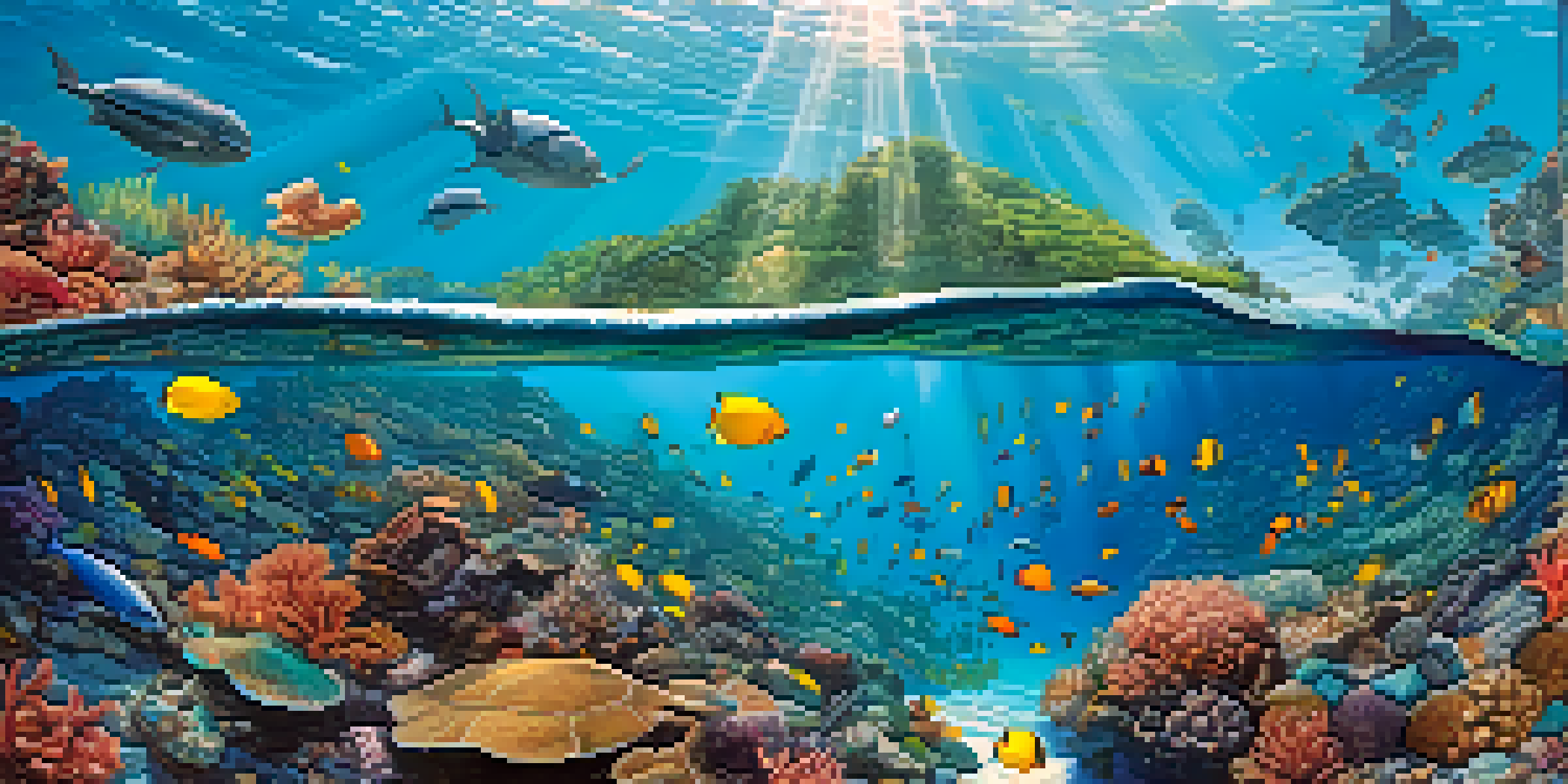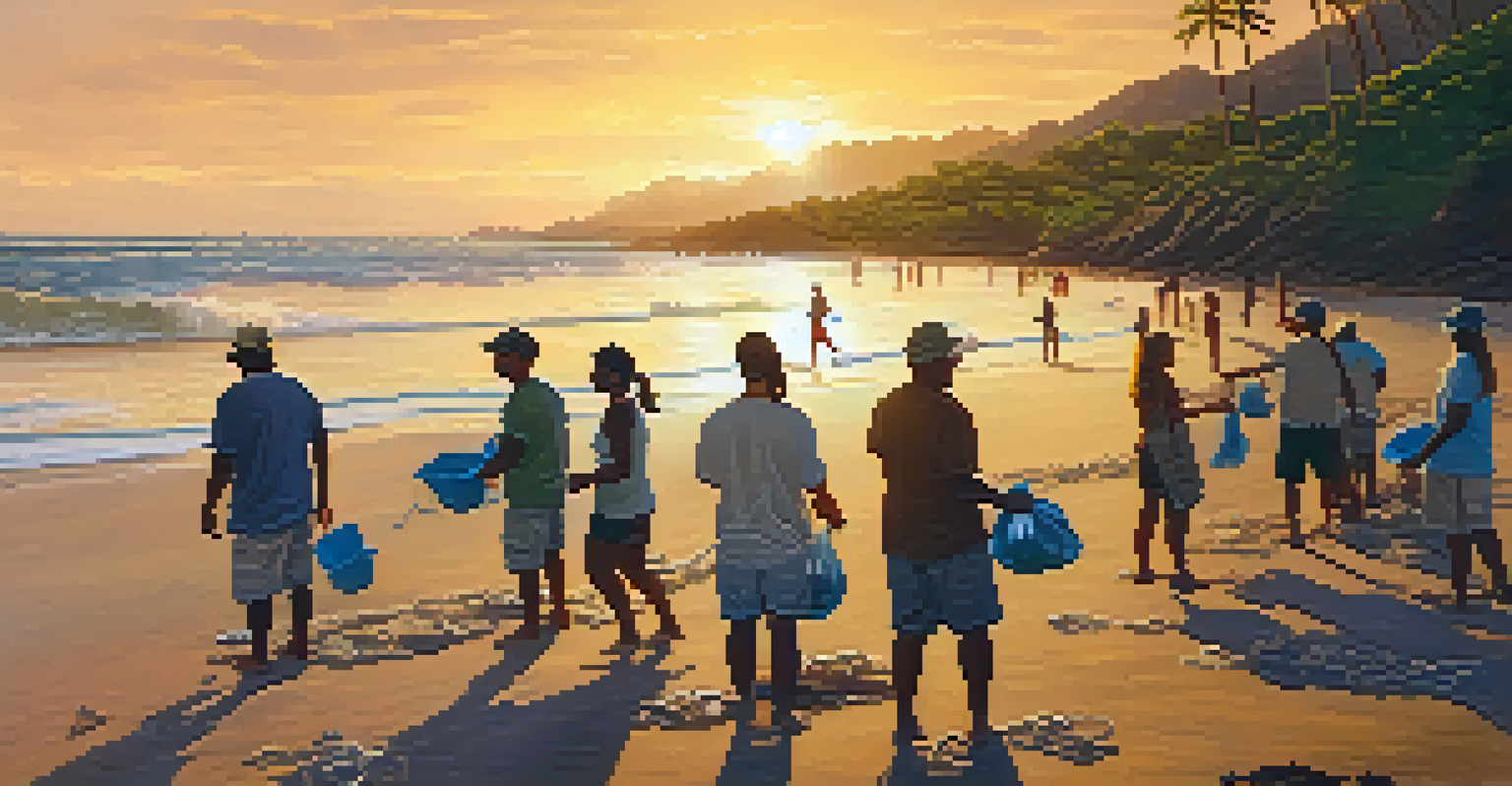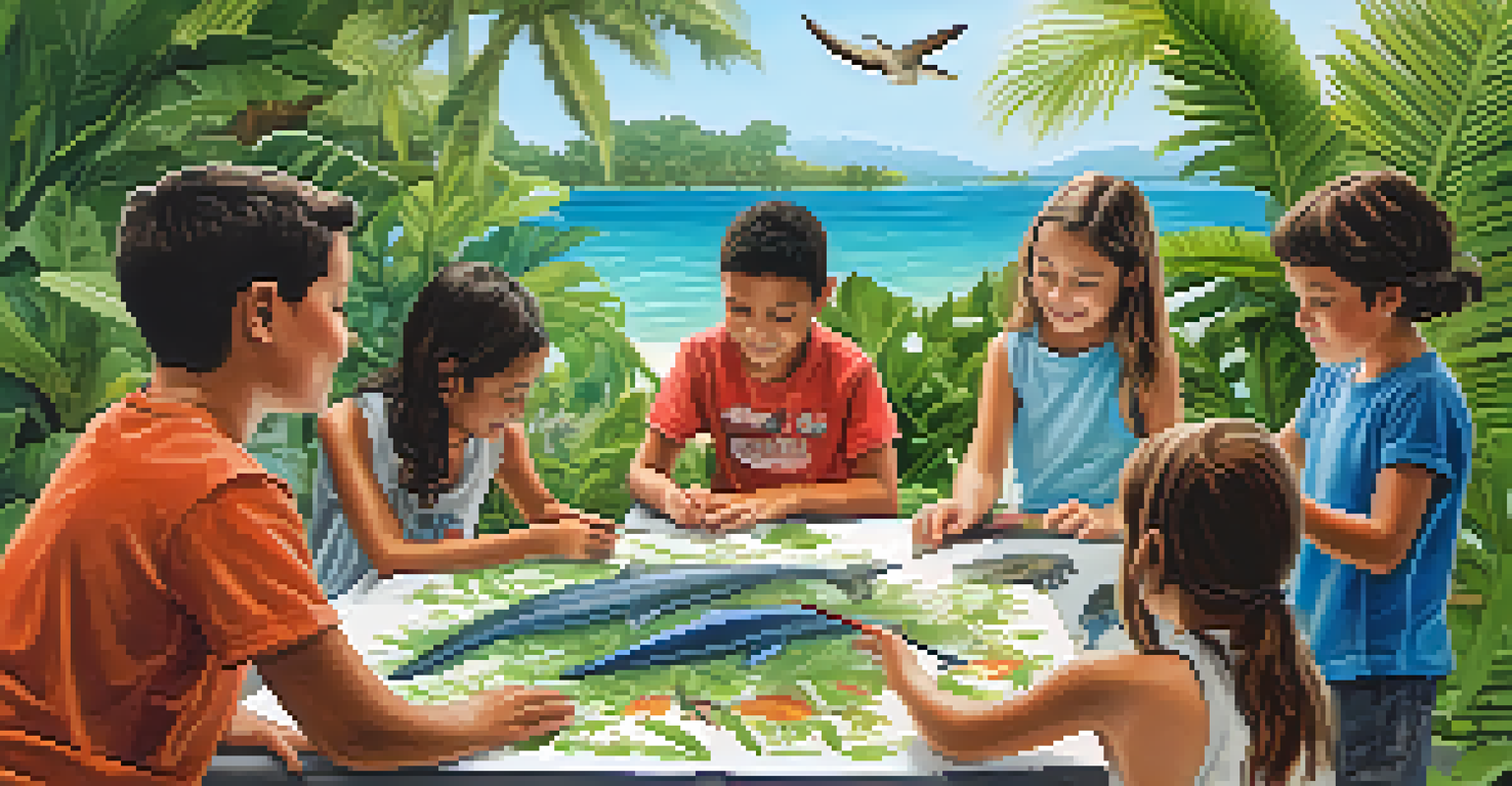The Role of Local Communities in Marine Conservation in Hawaii

Understanding Marine Conservation in Hawaii
Marine conservation refers to the protection and preservation of ocean ecosystems, particularly in areas rich in biodiversity like Hawaii. The islands boast some of the most diverse marine life, making conservation efforts essential. These efforts not only safeguard marine species but also maintain the health of local ecosystems that communities depend on.
The greatest threat to our planet is the belief that someone else will save it.
In Hawaii, the ocean is more than just a resource; it's a part of the culture and heritage. The traditional Hawaiian concept of 'Ahupua’a' emphasizes the interdependence of land and sea, reminding us that the health of marine environments directly affects the well-being of local communities. Thus, effective conservation requires community involvement at all levels.
Understanding the unique challenges faced by Hawaii's marine ecosystems, such as climate change and overfishing, is crucial. These challenges highlight the need for collective action, where local insights and traditional knowledge play a pivotal role in crafting effective conservation strategies.
The Power of Local Knowledge in Conservation
Local communities possess invaluable knowledge about their marine environments, often passed down through generations. This traditional ecological knowledge (TEK) provides insights into species behaviors, migration patterns, and the health of the ecosystem. Such information is vital for developing effective conservation strategies that are culturally relevant and sustainable.

Involving locals in conservation efforts not only helps in protecting marine life but also fosters a sense of ownership and responsibility. When community members actively participate, they are more likely to advocate for sustainable practices. For example, local fishermen can contribute to data collection on fish populations, which can guide regulations and policies.
Community Knowledge Drives Success
Involving local communities and their traditional ecological knowledge enhances the effectiveness of marine conservation strategies.
Furthermore, local knowledge can complement scientific research, creating a broader understanding of marine ecosystems. Collaborative projects that merge TEK with modern science can lead to innovative solutions that enhance conservation outcomes. This partnership between local communities and researchers exemplifies a holistic approach to marine conservation.
Community-Led Initiatives and Their Impact
Community-led initiatives have shown remarkable success in marine conservation across Hawaii. Programs like the 'malama 'aina' movement encourage residents to take active roles in protecting their natural resources. By organizing clean-ups, reef monitoring, and educational workshops, these initiatives empower locals to make a tangible difference.
We do not inherit the earth from our ancestors, we borrow it from our children.
One notable example is the establishment of 'Fishery Management Areas' by local communities, which help regulate fishing practices to prevent overexploitation. These areas allow fish populations to recover while ensuring that local fishermen can sustainably harvest marine resources. Such grassroots efforts not only protect marine life but also support local economies.
These initiatives highlight the potential for community engagement to drive conservation efforts. When people feel connected to their environment and see the positive results of their actions, they are more likely to continue participating in conservation activities. This sense of community also strengthens social bonds and fosters a culture of stewardship.
Education and Awareness in Marine Conservation
Education plays a critical role in marine conservation, particularly in engaging local communities. By raising awareness about the importance of healthy marine ecosystems, communities can better understand their impact on the environment. Educational programs tailored to local needs can inspire individuals to take action.
Schools and local organizations often collaborate to create programs that teach children about marine life and conservation practices. These programs not only inform the younger generation but also instill a sense of responsibility toward the ocean. Engaging families in educational activities like beach clean-ups or tide pool explorations fosters a deeper appreciation for marine environments.
Education Fosters Environmental Stewardship
Tailored educational programs inspire community engagement and a deeper appreciation for marine ecosystems.
Moreover, the use of social media and digital platforms has expanded the reach of conservation messages. Local groups can share success stories, challenges, and educational content, encouraging others to join the cause. This increased visibility can lead to broader community engagement and support for marine conservation efforts.
The Role of Traditional Practices in Conservation
Traditional practices, such as sustainable fishing techniques and resource management, are integral to effective marine conservation. For centuries, Native Hawaiians have practiced methods that promote harmony between human activity and the ocean. These practices often emphasize respect for marine life and the importance of maintaining ecological balance.
One example is the 'kapu' system, which historically regulated fishing and harvesting practices to prevent resource depletion. This system allowed certain areas to rest and recover, ensuring that marine life thrived. Reviving such traditional practices can provide valuable frameworks for modern conservation efforts.
Incorporating these practices into contemporary conservation initiatives not only honors cultural heritage but also enhances ecological resilience. By blending traditional knowledge with scientific approaches, communities can create more effective and culturally relevant conservation strategies that benefit both people and the environment.
Challenges Faced by Local Communities in Conservation
Despite the positive impact of local communities in marine conservation, they face numerous challenges. Limited resources, such as funding and access to training, can hinder the effectiveness of conservation initiatives. Additionally, external pressures, like tourism and commercial fishing, often complicate local efforts to protect marine ecosystems.
Climate change poses another significant challenge, affecting ocean temperatures, sea levels, and marine biodiversity. Communities may struggle to adapt to these changes while trying to maintain traditional practices. The unpredictability of environmental shifts can lead to conflicts over resource use and management.
Traditional Practices Enhance Resilience
Integrating sustainable traditional practices with modern conservation efforts strengthens ecological balance and cultural heritage.
Addressing these challenges requires collaboration among various stakeholders, including local governments, NGOs, and the community. By creating supportive networks and securing funding for training and resources, communities can strengthen their conservation efforts. Together, they can navigate the complexities of marine conservation and ensure a sustainable future.
A Vision for the Future of Marine Conservation
Looking ahead, the future of marine conservation in Hawaii depends on the continued involvement of local communities. By fostering a strong sense of stewardship and responsibility, we can inspire future generations to prioritize the health of our oceans. This vision includes not only protecting marine ecosystems but also ensuring that local cultures and traditions thrive.
Innovative approaches, such as community-based management and participatory research, can empower locals to take charge of their marine resources. By integrating scientific research with traditional knowledge, communities can develop sustainable practices that reflect their unique needs and values. This collaborative spirit can lead to more effective conservation outcomes.

Ultimately, the success of marine conservation in Hawaii lies in recognizing the invaluable role of local communities. Through education, collaboration, and respect for traditional practices, we can create a brighter future for both the ocean and the people who depend on it. Together, we can ensure that Hawaii's marine treasures are preserved for generations to come.